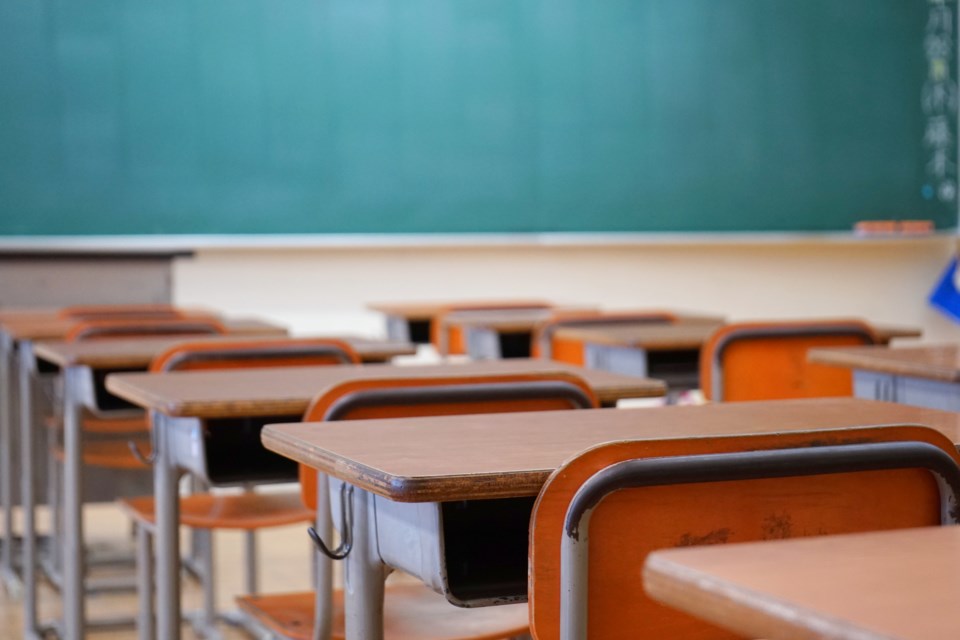Right now has been one of the most difficult times of her teaching career, a York Region kindergarten teacher says.
'Sarah' describes classrooms as “absolute chaos,” and her fellow kindergarten teachers are all experiencing the same situation. With 30-student classroom sizes and many students with significant special needs, she said students are not getting the care they need.
Sarah spoke anonymously for fear of repercussions with her employer for speaking out.
“We do what we can to try to support them before escalation happens,” she told NewmarketToday. “Unfortunately, I think the reality is we’re in a triage scenario right now. We don’t have enough staff.”
Educators have sounded alarms about mental health issues in schools. A new report from non-partisan People From Education highlighted significant mental health issues in schools across the province. Based on its annual general survey of 1,044 schools, 95 per cent reported needing some or more support for mental health, with only nine per cent having regular access to a mental health/addiction specialist and 46 per cent reporting no access at all.
“Principals report increased behavioural issues, students having difficulties with self-regulation, and a range of unaddressed mental health challenges,” the organization said.
Sarah said the student stress can translate to them using violence or running away. Teachers respond the best they can, but she said it is difficult. The pandemic has also reduced some student socialization skills, she said, making them less able to communicate their feelings.
It all takes a toll on staff.
“It is not uncommon to see a colleague who’s in the staff room crying,” she said. “Most of the time, we know what our students need. And unfortunately, a lot of the strategies we would normally use, or that are recommended to us, we just can’t make them happen. Because we’re triaging."
Local advocacy group York Communities for Public Education co-chair Sandra Huh said the pandemic impacted many students. She said families struggling with affordability can be felt in schools, as well.
“Kids are really dealing with a lot of stressors. Many people lost jobs,” she said. “As a parent, it was pretty intense during the pandemic, and the post-pandemic world is not easier.”
Classroom sizes and other issues also impact mental health, Huh said.
“All these stressors, these aren’t the fault of children. But students need support. Their families need support."
Huh said her son on the spectrum has had struggles, with her family stuck on the waitlist for government support. Although they have relied on outside therapies, she worries about those who cannot afford that.
“As a parent, it makes my stomach turn when there are not enough adults in schools to guide kids when they’re struggling,” she said. “I really hope that we can get ahead of what’s happening in our schools before it gets really bad."
The government needs to take substantive action, she said.
“As a parent, I want to see real commitment to real change, not just little flashy speeches.”
Asked to respond to the report, minister of education spokesperson Grace Lee said the government has worked to fund mental health, with a nine per cent increase in regulated mental health professionals in the province. The government allocates $485 million annually toward providing community-based mental health services to youth across Ontario.
“Since day one, our government has increased funding in mental health,” Lee said. “We have invested $130 million in community-based mental health services for children and youth and will continue to take action to support Ontario students."
She further said the government has funded hiring 7,000 additional education workers in schools, including social workers and child and youth workers.
But a report from the Financial Accountability Office of Ontario released this week found the province has underspent across many sectors, down about five per cent, or $6.4 billion, from budget projections. In education, that has amounted to underspending of $844 million.
In the People for Education survey, 93 per cent of schools reported needing support staff such as educational assistants and administrators. Meanwhile, 56 per cent of elementary and 64 per cent of secondary schools reported collaboration with local mental health organizations, but principals commented that these collaborations could provide much needed student support.
The organization is recommending a task force made up of many parties to examine issues in the system.
“Principals’ responses ... paint a picture of a system and the people in it under severe stress,” the People for Education report said.
Sarah said schools need more staff and supplies, including psychologists. She said existing educational assistants are being stretched too thin.
She hopes the province recognizes what is happening in schools, but she has no indication that will happen.
“It’s time to recognize that everyone needs a well-funded education system, or we’re going to end up with a collapse,” she said. “We’re going to end up 10 years from now looking back and talking about a lost generation.”


